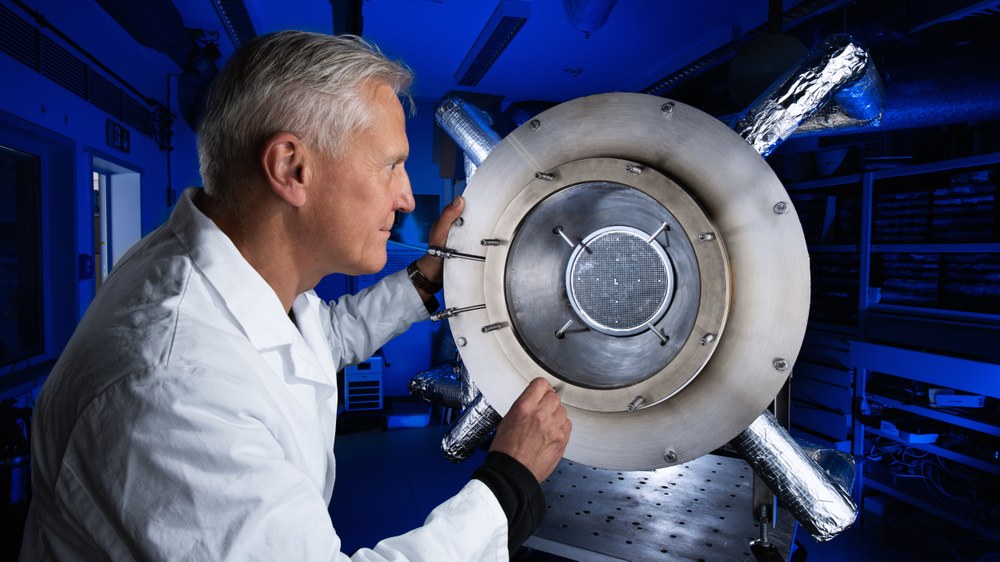The chemical, cement and steel industries in particular need alternatives to fossil fuels in order to reduce their greenhouse gas emissions. Another advantage of hydrogen is that it can be easily transported over long distances and its use therefore opens up opportunities for international cooperation in energy supply.
But there are also challenges, such as the cost of producing green hydrogen, building sufficient production capacity and developing a suitable infrastructure for transport, storage and distribution.
There are various methods for producing hydrogen, which differ in terms of their costs and greenhouse gas emissions. Currently, hydrogen is mainly produced from fossil fuels, which causes high CO2 emissions. New technologies based on renewable energy are being developed to make production more environmentally friendly.
In 2020, Germany has set itself the target of increasing the share of renewable energies in gross final energy consumption from 19 per cent in 2020 to 30 per cent in 2030.
To achieve this goal, energy imports will still be needed, but no longer on the basis of fossil fuels. And hydrogen can play a key role here. How quickly and to what extent the transition to a hydrogen economy will succeed depends not only on technical innovations, but also on the political and social framework conditions.
Production
Hydrogen exists on earth almost exclusively in chemically bound form. There are two main sources: water and organic substances (hydrocarbons). In order to use it as an energy carrier, it must be extracted from these compounds. Water, which contains the majority of terrestrial hydrogen, is particularly attractive as its splitting produces only hydrogen and oxygen. Extracting hydrogen from hydrocarbons produces CO2 emissions - unless the carbon is captured and stored in such a way that it cannot escape into the atmosphere. If renewable plant-based raw materials are used, hydrogen can be produced in an almost CO2-neutral way, but their availability for industrial use is limited.
Methods for hydrogen splitting are:
- Electrolysis
- Solar thermochemical processes
- Photo-electrochemical and photocatalytic processes
Elektrolysis
Water electrolysis splits water into hydrogen and oxygen using an electric current, thereby chemically storing electrical energy. If the electricity used comes from renewable energy sources, hydrogen electrolysis can be used to produce green hydrogen. Three electrolysis technologies are relevant:
- Alkaline electrolysis
- Proton exchange membrane electrolysis (PEM electrolysis)
- High-temperature electrolysis

Solar thermochemical processes
Solar thermochemistry utilises solar energy in the form of heat to initiate chemical reactions that produce hydrogen. The high-temperature process is an alternative to splitting hydrogen from water by electrolysis using electrical energy from solar power.
The best-known variant of this process uses a redox material as its centrepiece, which changes its oxidation state between two states. The change is activated by solar energy and forms the basis for hydrogen production. In cyclic processes, a metal oxide, the redox material, is cyclically reduced and oxidised. At temperatures of around 1,000 degrees Celsius and above, the metal oxide releases oxygen - it is reduced. During the subsequent oxidation, it comes into contact with water vapour and removes the oxygen from it, resulting in hydrogen as a product. Originally developed for the utilisation of waste heat from high-temperature nuclear reactors, the focus today is on the use of concentrating solar technology as an energy source. Theoretical analyses indicate a very high theoretical efficiency potential of more than 30 per cent.
DLR is developing various technologies to utilise these cyclic processes and increase the efficiency levels achieved in experiments.
Photo-electrochemical and photocatalytic processes
Photo-electrochemical cells (PEC) offer a method of producing hydrogen using solar energy through light-induced water splitting. They use special semiconductors and an electrolyte system located between an anode and a counter electrode. Photocatalysis differs from this in that there is no counter electrode.
The solar thermal, photo-electrochemical and photocatalytic processes are still in the experimental phase and have a low technology readiness level of TRL2 to TRL5 (Technology Readiness Level, TRL: This categorisation is used in the European research environment to assess the maturity of future technologies up to commercial implementation on a scale of 1-9). The processes are promising, but require further research. If higher efficiencies are achieved, the costs of hydrogen production could be significantly reduced.




